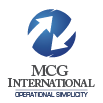Best Practices for Procure to Pay Processes
I found this study and write up by David Cramer at Visa and wanted to share it. I think it makes a very good argument for a best practice approach. While focused on credit card transactions, the lessons learned apply to almost any model.
Beyond the use of more efficient payment methods, businesses can realize additional cost savings through optimization of procurement and expense management processes. Visa commissioned Deloitte Consulting to conduct a comprehensive study of procurement and payment best practices for companies based in the United States.
The study focused on three key areas of a companies’ business processes. The first was the company’s procure-to-pay foundation as defined by overall procurement strategy, organization and technology. The second was how the company managed its commercial card program, including purchasing cards, T&E corporate cards, and fleet cards. The third was the procure-to-pay process itself, including sourcing, order placement, payment/settlement, reconciliation, control audit and reporting.
More than 50 large corporate and mid-sized companies considered to have leading procure-to-pay practices participated in the study. They were identified by a process to ensure proper distribution by revenue size, geography, industry type and company culture.
Key Findings for Procure-to-Pay Optimization
Based on the study findings, Visa and Deloitte developed 60 best practices to help companies attain greater work efficiencies and cost savings. These procure-to-pay best practices provide practical ways for companies to achieve an optimized procurement and expense management process by addressing six key areas:
- Proactive, ongoing senior management sponsorship for procure-to-pay initiatives
- Collaboration to ensure communication and enforcement of procure-to-pay policies and procedures
- Progressive migration to automating the entire procure-to-pay information technology platform
- Aggressive strategic sourcing focus to enhance vendor relations
- Comprehensive data aggregation and reporting to support management and enable continuous improvement of procure-to-pay functions
- Commercial card objective alignment with a company’s overall procure-to-pay strategy
Selected Procure-to-Pay Best Practices
Of the 60 best practices developed from the study, some of the most relevant practices for optimizing the procure-to-pay process and generating increased efficiencies are:
- Minimize use of paper purchase orders
- Eliminate manual check payments
- Optimize the number of suppliers
- Utilize e-sourcing tools to find suppliers
- Implement use of purchasing and corporate cards
- Require suppliers to accept commercial cards
- Establish policies for commercial card use
- Incorporate a commercial card training program
- Mandate use of commercial cards for eligible expenditures
- Utilize data for better spending visibility
Because the vast majority of business-to-business payments are still taking place via paper check, there is much to be gained from the migration to electronic payments and the refinement of the entire procure-to-pay process. Best practices that focus on each step of the procure-to-pay process chain are invaluable in helping to identify where companies can make improvements to enhance efficiency and realize cost savings.
